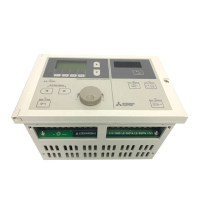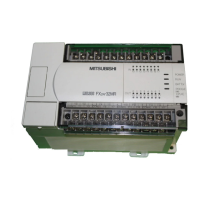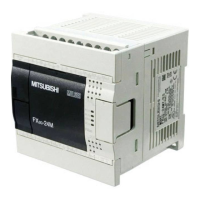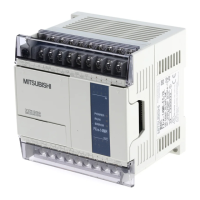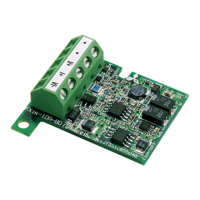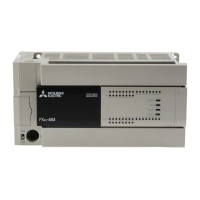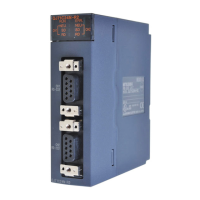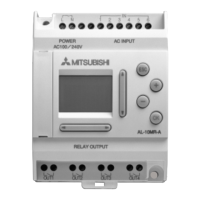244
5.2.11 Counter (C)
The counter (C) is a device that counts the number of rises for input conditions in programs. When the count value
reaches the set value, its contact is turned on.
(1) Counter type
The following counter is available.
• Counter that counts the number of rises for input conditions in programs
(2) Counting
(a) When OUT C instruction is executed
The coil of the counter is turned on/off, the current value is updated (the count value + 1), and the contact is
turned on. In the END processing, the current timer value is not updated and the contact is not turned on.
(b) Current value update (count value + 1)
The current value is updated (count value + 1) at the leading edge (off → on) of the OUT C instruction. The
current value is not updated while the coil is off, or when it remains on or turns off from on by the OUT C
instruction.
END OUT C0 END
[Program example]
[Processing at OUT C0 instruction (X0: OFF to ON)]
Coil ON/OFF
Current value update
Contact ON
Processing
[Program example]
X0
OFF
OFF
ON
ON
END END ENDOUT C0 OUT C0 OUT C0
[Current value update timing]
Program
Coil of C0
Current value update
Current value update
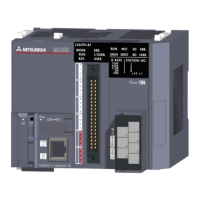
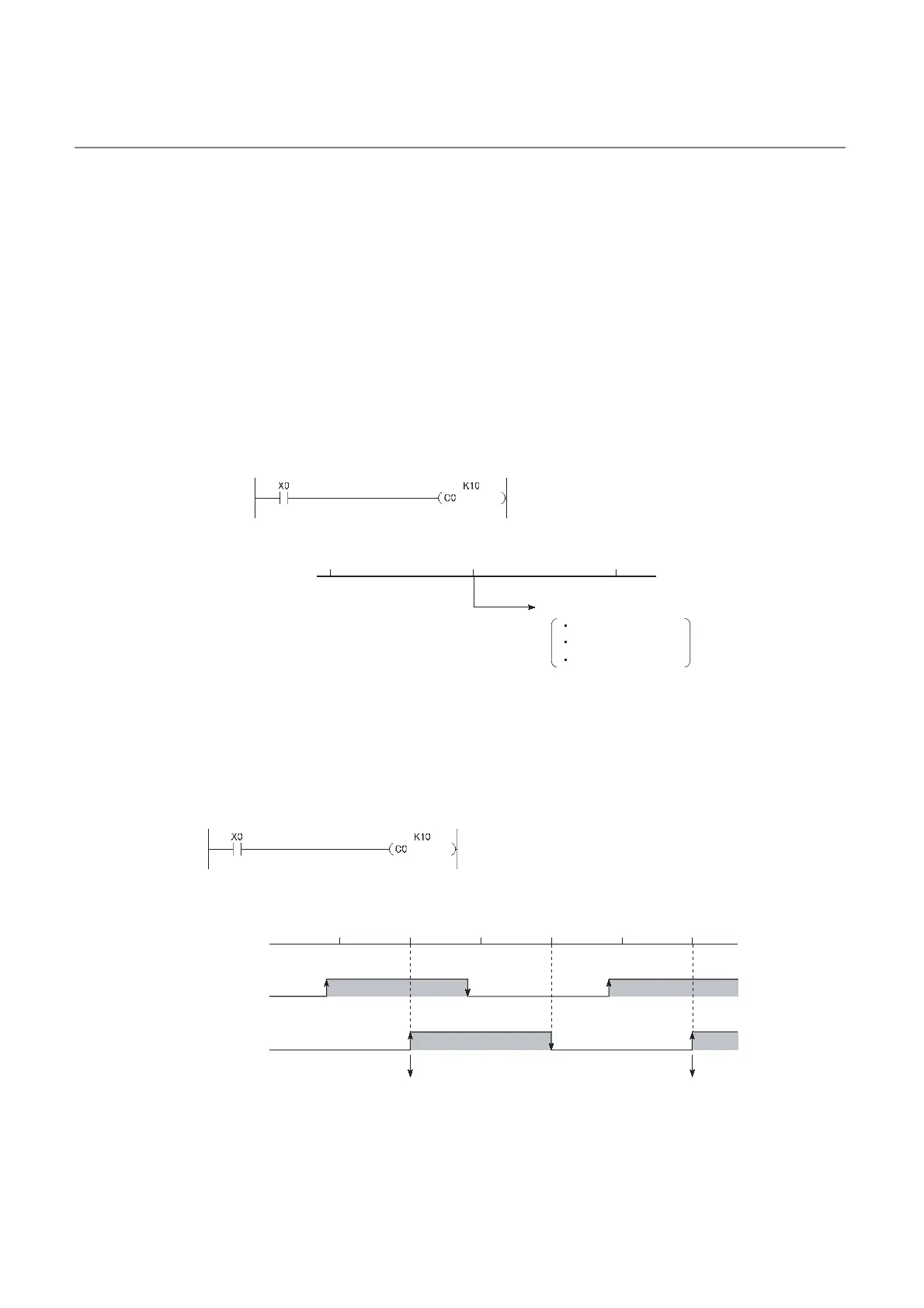